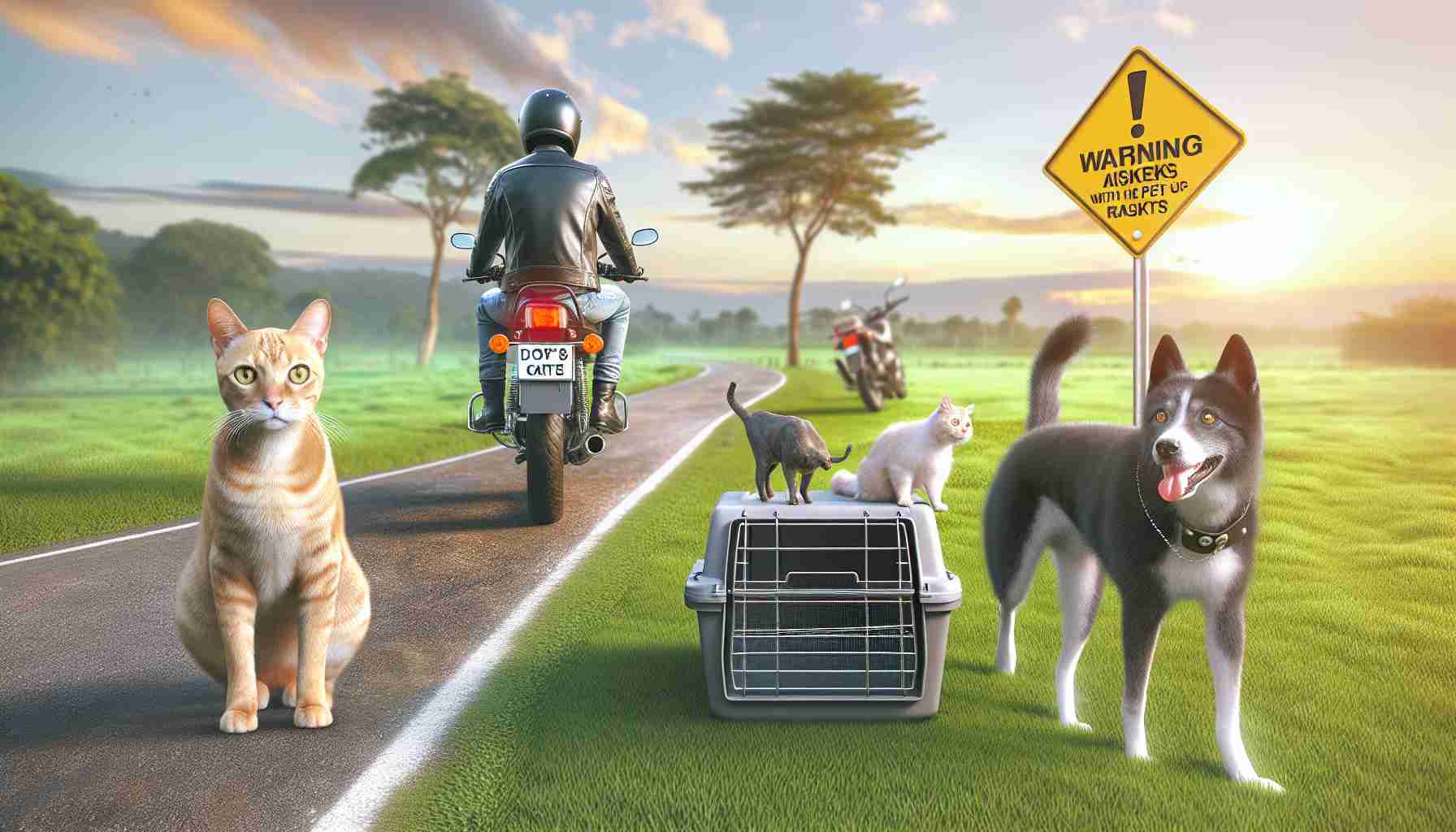Traveling with pets on a motorcycle presents unique challenges and risks that every owner must assess. Motorcycles inherently entail certain dangers, both for riders and their animal companions. Statistics have shown that a significant portion of motorcycle accidents occur during daylight hours, in favorable weather conditions, and often with sober drivers. This highlights the unpredictable nature of the road, underscoring the need for caution.
Before embarking on a journey with your dog, take a moment to consider both the potential hazards and the overall value of the experience for you and your pet. Evaluate your comfort level in bringing your dog, based on your riding style, the distance of your trip, and the condition of your route. Additionally, it is essential to ascertain whether your dog is physically capable of handling the ride without stress.
While it is mostly permissible to travel with pets on motorcycles across the United States, regulations differ from state to state. Many states enforce guidelines designed to secure pets during travel, ensuring they cannot easily fall off or be ejected from their carrier. For instance, certain locations require that any open carrier meets specific height requirements to enhance safety.
Ultimately, preparation and awareness of local laws are key to ensuring a safe and enjoyable journey for both you and your beloved canine companion.
Understanding the Risks of Motorcycle Travel with Pets: Key Insights
Traveling with pets on a motorcycle may sound like an adventurous idea, but it brings along a unique set of risks and considerations that every rider must take into account. While many people enjoy the thrill of hitting the open road with their furry friends, it’s imperative to understand how to mitigate the risks involved and ensure a safe and enjoyable journey.
Key Questions to Consider
1. What safety measures should be taken before traveling with a pet on a motorcycle?
– Riders should invest in high-quality pet carriers or harnesses specifically designed for motorcycle use. The carrier should be secure, comfortable, and properly ventilated to suit your pet’s needs.
2. How can I determine if my pet is suited for motorcycle travel?
– Consider the pet’s age, temperament, and health condition. Older or anxious animals may not adapt well to the experience, while younger pets might be more resilient. It might be wise to take short trial rides to assess their comfort level.
3. What legal requirements must be followed when traveling with pets?
– Laws regarding pet transportation on motorcycles vary by state. Ensure your pet is securely restrained and meet any specific guidelines related to carrier size and safety.
Challenges and Controversies
One of the main challenges associated with motorcycle travel with pets is the risk of distraction. A pet that is not properly secured can easily become a source of instability, diverting the rider’s attention from the road. In severe cases, this could lead to accidents. Additionally, some advocates warn against motorcycle travel with pets, citing the stress that can be caused by wind, noise, and rapid movement.
Another controversy stems from differing views on what constitutes safe travel. While some argue that all pets should be kept completely inside a carrier, others believe that a well-trained pet that can sit calmly in a designated space might handle travel without a full enclosure. The lack of clear guidelines can lead to confusion and potential dangers.
Advantages and Disadvantages
Advantages:
– Motorcycle travel can be exhilarating, providing a sense of freedom that many riders cherish.
– Pets can be excellent companions, enhancing the travel experience and providing emotional support to the rider.
Disadvantages:
– The dangers associated with motorcycle travel, including high-speed winds and susceptibility to accidents, pose risks for both the pet and the rider.
– Pets may become anxious or fearful during rides, leading to discomfort for both the animal and the owner.
Conclusion
Motorcycle travel with pets can be a rewarding experience if done with caution and preparation. Riders can savor the thrill of adventure while ensuring their furry companions remain safe. To enhance your knowledge on the topic, consider visiting relevant resources that provide further information on safe travel methods and pet care. For more insights, visit AKC and CDC for additional guidelines.
By carefully evaluating your pet’s needs, staying informed about local regulations, and taking the necessary precautions, you can enjoy the open road with your four-legged friend by your side.














